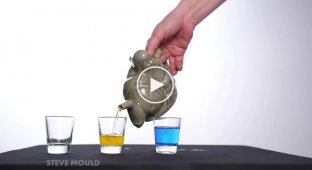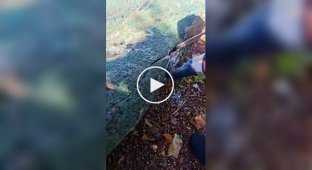A detailed description of development inside an egg: a fascinating process that few people know (14 photos)
An ordinary egg. We see it every day—on the table, in the refrigerator, on the supermarket shelf. It's so simple, so familiar, that we rarely consider how perfect it is. Yet, with just a little warmth and care, the most amazing miracle of this world occurs beneath the shell—a new life is born. 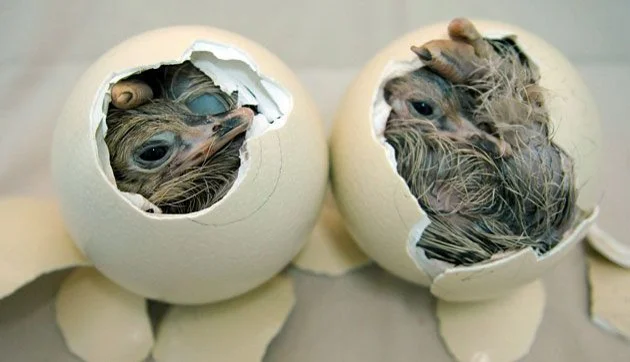
Every day, a monumental work unseen from the outside takes place inside the egg. Today, we'll lift the veil of secrecy and discover how, in just 21 days, a real, living chick emerges from a chicken egg. 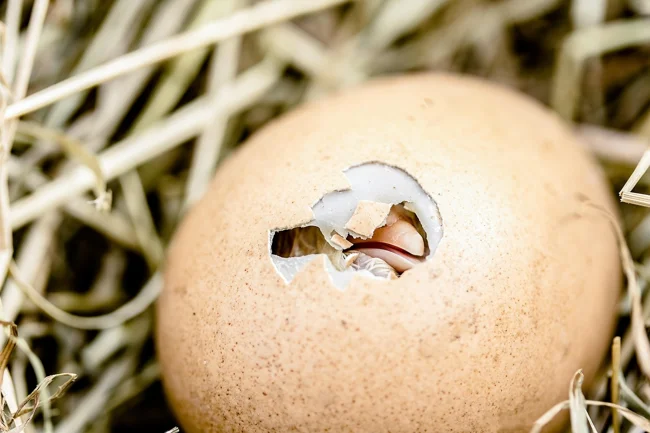
Oh no, not the outside world! I want to stay home and play computer games!
Development Stage Number 0. Yolk
Since the chick develops independently of its mother, nature had to think carefully about how to provide the embryo with everything it needs. Therefore, at the very beginning of development, an egg cell with a huge supply of nutrients is formed in the mother hen's body over several days. Because of this, the bird's egg cell is so large that it is visible to the naked eye: a human's egg cell, for example, is about 0.1 millimeters in diameter—it can only be seen with a microscope. A chicken's egg cell, on the other hand, is about 4 centimeters in diameter. Yes, you heard that right – that's the yolk! 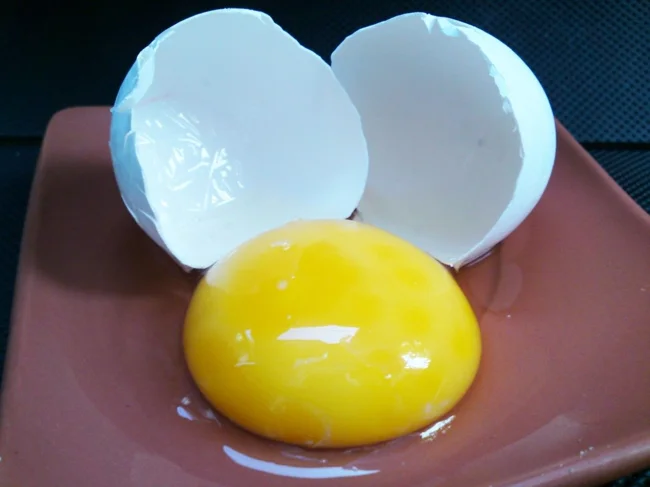
What kind of yolk do you like? Soft or runny?
That's why eggs are so healthy: the yolk contains a huge amount of vitamins, microelements, and fats. But let's assume that no one eats this egg, and it continues to develop as it should. This process lasts only a few minutes and occurs in the mother hen's body after she has a date with the rooster. If the encounter doesn't occur, the egg will remain unfertilized, meaning it will never hatch. All store-bought eggs are exactly like this, because on farms, laying hens are kept separate from the opposite sex. 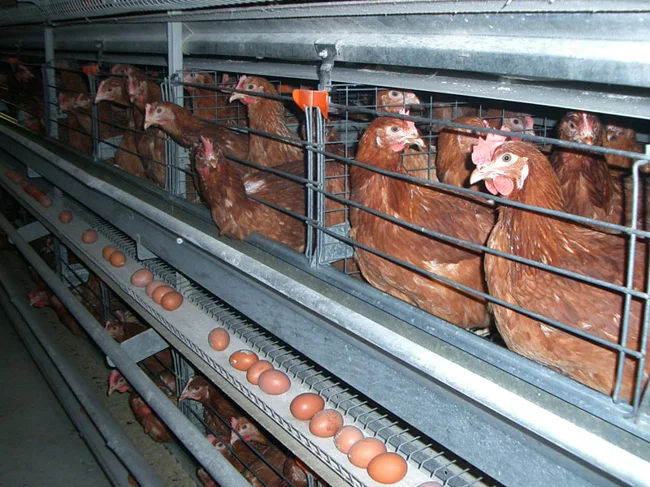
We have an all-female team at our factory!
At first, everything is as usual: the sperm meets the giant egg, and the nuclei fuse. A zygote is formed—the very first cell that will eventually develop into a fully developed organism. But while the embryo is inside the mother, its development is halted. It descends through the oviduct. 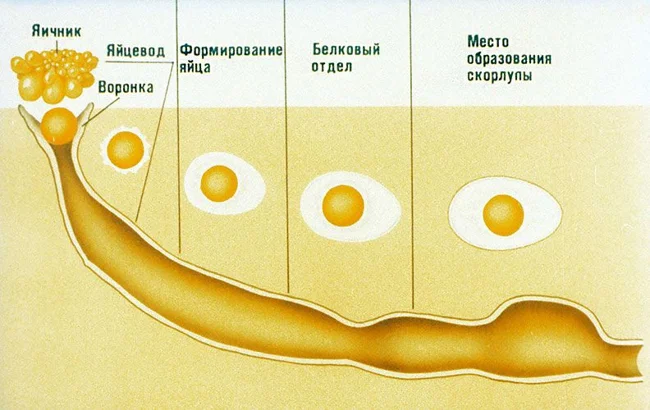
Stages of egg formation inside a hen.
First, the yolk enters a compartment where it is coated with white. This forms the egg shell, protects the embryo from external shocks, and supplies it with water. Further down, the zygote enters a compartment containing the shell glands. These glands secrete a concentrated mineral solution that settles on the egg shell, hardens, and turns into a shell. This process takes almost a day. The end result is a fully developed egg. A fertilized egg can wait for about a week in a cool place. During this time, nothing happens inside it. But place it in a warm place—under a hen's wing or in an incubator—and its heart will begin beating within just 24 hours! By comparison, a human embryo's heart doesn't begin beating until three weeks later. 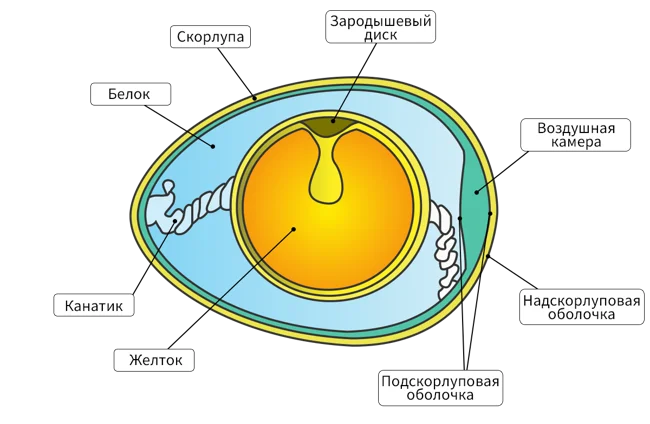
Schematic structure of an egg.
Immediately after the egg "feels" warm, the zygote begins to divide rapidly. It will form three germ layers—sheets of cells. The outermost layer, the ectoderm, will later become the chick's skin, feathers, eyes, and nervous system. The innermost layer, the endoderm, will form various organs. The middle layer, the mesoderm, will develop into muscles, bones, and blood vessels. One of the vessels immediately begins to pulsate—this is the heart! If you crack such an egg, you'll see a thin web of vessels on the surface of the yolk—not yet a chick, but already alive. 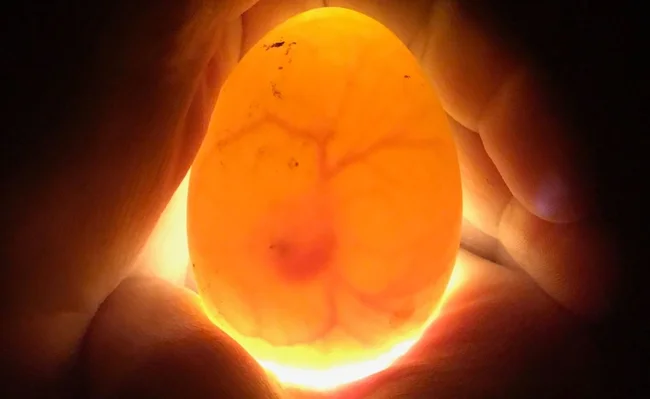
To determine whether the egg is fertilized, it is candled. The web of vessels speaks for itself.
Stage 3. Formation
This stage lasts about 10 days. Development proceeds by leaps and bounds: all this time, the chick actively consumes nutrients from the yolk and water from the white. A vague cluster of cells and a network of blood vessels transform into a tiny embryo. By the end of this stage, it already resembles a chicken: you can distinguish feet and toes, wings, a head, eyes, a beak, and a body. 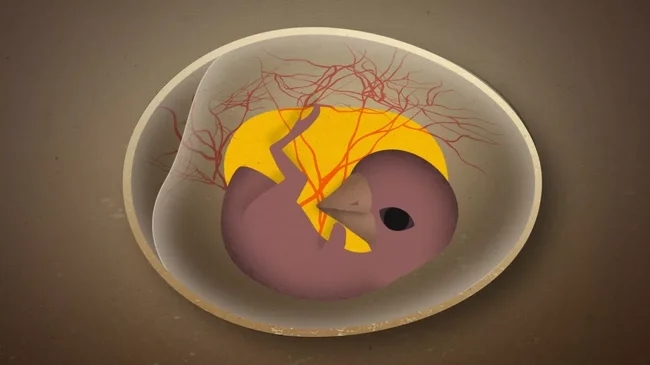
A diagram of what a chick looks like inside an egg. The real photos are quite terrifying.
But nutrition alone isn't enough for a growing organism. For the embryo to survive, it needs oxygen. But how can it breathe in a completely isolated space? In fact, an egg isn't as impenetrable as it first appears. If you look at the shell under a microscope, you'll see that its surface is riddled with tiny holes called pores. Through these holes, oxygen enters the egg and carbon dioxide is expelled. 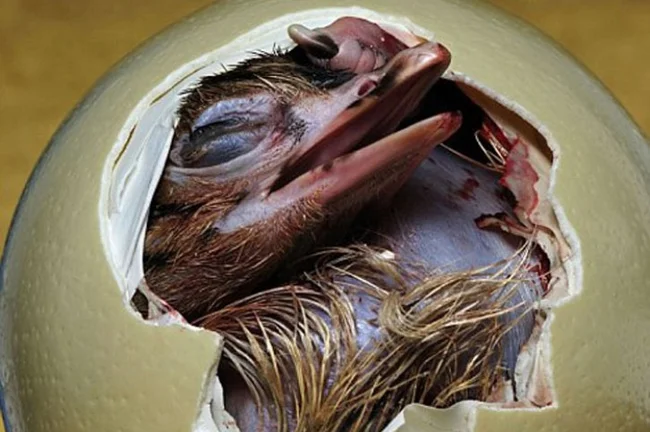
On ostrich eggs, for example, these pores are visible to the naked eye.
If you look inside, you'll see that the back of the shell is lined with a network of blood vessels. This special layer is called the chorioallantois. This is how the embryo breathes. The shell replaces the embryo's lungs and becomes the primary organ for gas exchange. This process also lasts approximately 7-10 days. During this time, the embryo's muscles and ligaments are actively growing, it becomes covered in feathers, and real bones are forming inside its body. The chick receives calcium for these bones from the shell. By the end of this stage, the chick occupies almost all the space inside the egg. It's almost a full-grown chick, but if you break the egg now, it will die—life must knock from within. 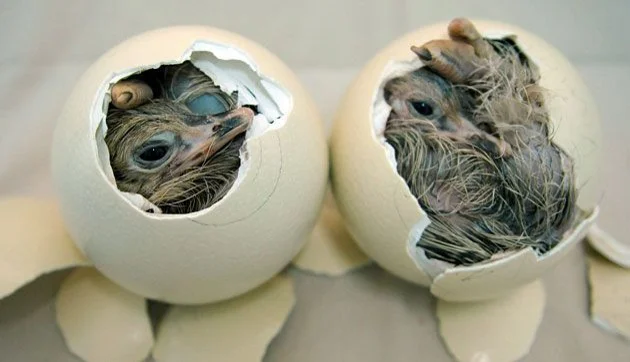
Knock-knock, no one answered, so we broke down the door to life!
At this stage, the future chicks receive their first vaccination. Yes, they're vaccinated while still in the egg! A special device with long needles is used for this. It carefully punctures the egg and injects the vaccine into the cavity near the embryo. This significantly boosts immunity and reduces stress. Because a fully developed live chick already understands that it's being handled and injected with a needle, but an embryo like this doesn't, so there's no stress from the vaccination. 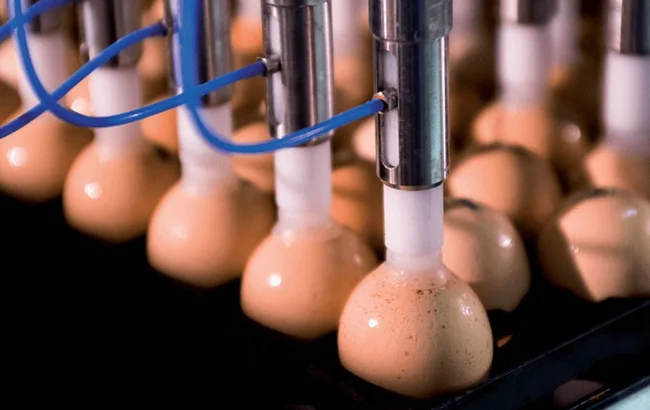
This type of vaccination is called in ovo. It is performed using special devices that secure the egg, disinfect the surface, and deliver the injection to the desired site without harming the embryo.
Stage 5. Hatching
By day 21, the chick is fully formed and begins to breathe with its lungs inside the egg. Space inside the shell becomes critically limited, the yolk is completely absorbed, nutrients are almost depleted, oxygen is scarce, and the chick desperately strives to get out. 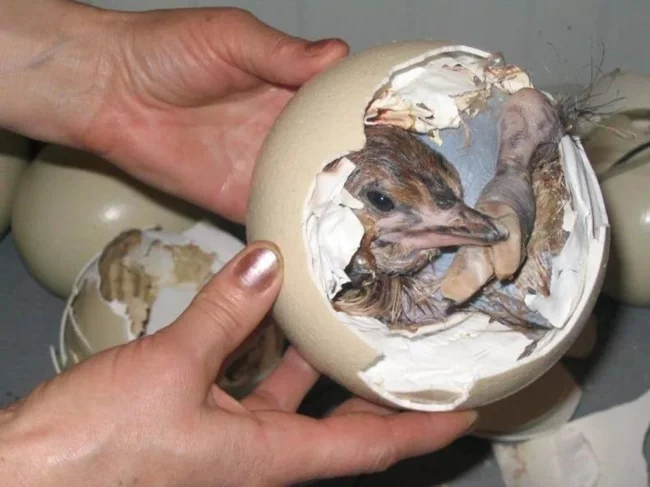
When you finally open the window in a stuffy room.
In search of oxygen, the chick punctures the air cell at the blunt end of the egg with its beak. This small, hollow space provides the baby with air for a couple of hours, but very soon even this is not enough. It has to push on! 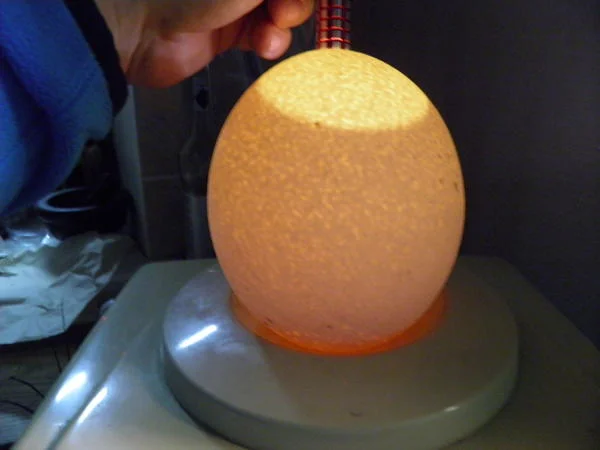
What's visible inside the egg is the air cell. Depending on the bird species, the amount of air a chick needs may vary. Pictured is a goose egg.
Chicks use a tooth to crack the hard shell. We have baby teeth, and all chicks in the world have an "egg tooth" in the first few days of life. This is a horny growth on the top of the beak. By wiggling around inside the egg, the chick uses the egg tooth to peck a hole and take its first real, deep breath. This gives the chick the strength to peck the shell completely open and escape. 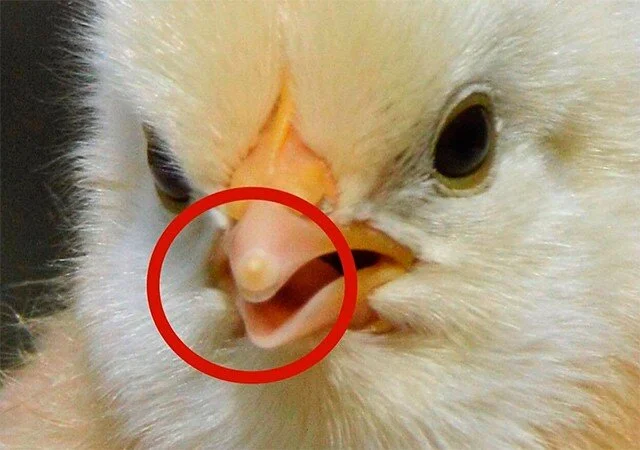
This small bump on the beak is the egg tooth. It will either fall off or dissolve very soon. This is found not only in chicks, but also in the offspring of reptiles and amphibians.
That's it. Hurray, the chick is free!






















